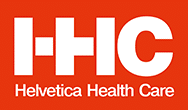The Workings of Molecular Diagnostic Testing and its Uses

When discussing new-age diagnostics, one often hears terms like molecular testing. This revolutionary technique, also known as molecular diagnostics (MDx), molecular pathology or molecular biology, has become critical in medical laboratories as the foundation of disease diagnostics. This is true, especially in the case of the COVID-19 pandemic. Remember the term RT-PCR? Real-Time or Reverse Transcription Polymerase Chain Reaction or RT-PCR is an advanced molecular testing technique that made it possible for the world to fight this infectious virus.
Almost two decades after the completion of the Human Genome Project, successful advancements in molecular pathology have made it possible for the healthcare industry to benefit from its many uses, making it a gold standard of anatomic and clinical pathology. High-throughput techniques, like next-generation sequencing, are proving to be primary investigative tools that reveal vital information on the aetiology of diseases.
Herein we explain everything you need to know about this next-gen technology and its uses.
What is molecular testing?
In principle, molecular testing refers to a large set of tests that study the genetic material in a given specimen. These lab tests are performed to look for molecules in your genetic profile, Deoxyribonucleic acid (DNA), or fragments of genetic material – Ribonucleic acid (RNA). Molecules under study could be biomarkers such as proteins, genes from tissue samples, urine, saliva, blood, faeces and targeted organ tissue (for a biopsy of a tumour). Thanks to these tests, today, laboratories can identify genetic risk factors for certain pathological conditions such as cancer or prove the presence of infections in the body.
The two main areas of molecular diagnostics that have expanded the most are automated extraction, amplification and detection platforms, and next-generation sequencing. Next-generation sequencing, or DNA sequencing, is the most accurate and reliable method for identifying and monitoring diseases and has already replaced many conventional lab testing methods.
To receive high-quality outputs using modern testing platforms, Helvetica Health Care (HHC) provides EXTERNAL RUN CONTROLS NAT controls or NATtrol™ products. These controls are non-infectious, refrigerator stable, supplied in liquid format and ready to use. They are open systems and can be used across different molecular testing platforms. Some controls have been developed in collaboration with leading platform manufacturers to optimise concentration levels.
What are the uses of molecular testing?
The primary goal of molecular diagnostics is the identification of genetic variations to simplify detection, diagnosis, classification, prognosis, and track treatment response. Medical experts and doctors rely heavily on modern molecular techniques to
- analyse the risks of certain diseases,
- establish the existence of infections that are hard to detect using conventional lab methods,
- devise and confirm treatment decisions by providing support to patients, particularly to pregnant women or women planning a pregnancy,
- evaluate patients’ potential responses to medication and the effectiveness of an ongoing course of treatment and
- detect certain conditions or subtypes, like breast or ovarian cancer.
Below we give you a deeper insight into these applications.
Genetic testing to detect risk factors for cancer
Molecular or genetic testing is highly effective for locating high-risk families and determining each family member’s cancer risk. Commercially available sequencing panels today can evaluate most of the genes linked to familial cancer disorders, for instance, the detection of BRCA1 or BRCA2 gene mutations associated with hereditary ovarian and breast cancers.
Genetic testing is equally effective in defining risks for cystic fibrosis, melanoma and chronic myeloid leukemia. Furthermore, molecular diagnostics can detect biomarkers that indicate the efficacy of specific treatments, such as changes in the EGFR gene can determine if EGFR inhibitors could be effective in treating lung cancer.
Detecting viruses such as COVID-19 and human papillomavirus (HPV)
A highly effective method for examining SARS-CoV-2, the high-performing RT-PCR molecular test can determine whether someone has the COVID-19 virus. It is important that such PCR tests are run as advised, with the correct number of cycles. RT-PCR outcomes are generally more accurate than antigen tests which work through the identification of proteins produced by a person’s immune system to fight against the COVID-19 virus. Certain molecular tests can also analyse fragments of viral DNA to detect the presence of HPV.
Detecting biomarkers for hereditary diseases other than cancer.
Genomic biomarkers detected through molecular testing help medical professionals assess disease genetic predisposition and enable them to create and implement accurate diagnostic methods and personalise treatment strategies. Biomarking tests study mutations in your DNA that are associated with the progression of certain hereditary disorders, such as hypercholesterolemia. Individual family members can get tested to understand if they have inherited the same changes in the APOB, LDLR and PCSK9 genes and seek treatment early on.
Other Infectious diseases
Besides investigating hereditary diseases, scientists use molecular tests to diagnose infectious respiratory, gastrointestinal, and central nervous disorders. Multiplex molecular testing panels can detect various kinds of infectious agents, including bacteria, parasites, fungi, and viruses, in a very short time (detection of 20 or more different agents that may perform in under 65 minutes).
New-age genetic testing is possible due to the successful synergy between genetic science, lab research development and molecular genomic technologies. To provide an accurate diagnosis with consistent outputs, you need the proper external controls to validate your molecular testing.
HHC supplies EXTERNAL RUN CONTROLS, NAT controls, panels and serology controls designed to validate your molecular testing. Using these external controls helps you create confidence in lab testing procedures and assures consistent molecular results. Many of our controls are CE / IVD. The use of external controls is highly recommended under ISO15189:2012, as they provide an independent verification that the molecular assay is working correctly and thus their use provides an assessment of quality.
Our products offer better patient safety, promise quality outcomes, and confirm the competence of medical laboratories by customers, regulating authorities and accreditation bodies competence. Some controls have been developed in collaboration with leading platform manufacturers to optimise concentration levels in line with the particular platform.
Call us to learn about all our molecular testing controls, panels and serology controls, or visit us at https://www.h-h-c.com to view the entire list of platforms with which our controls are fully compatible.
